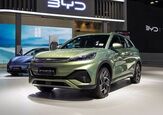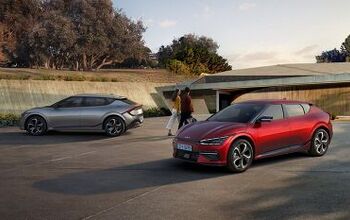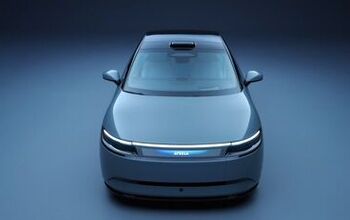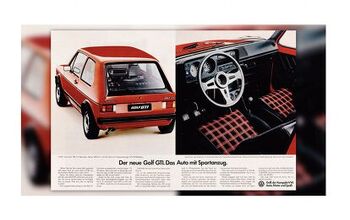Bulky A-pillars Getting in the Way? Toyota Has a Clear Solution

Back in the days of sky-high tailfins and wraparound windshields, A-pillars weren’t of sufficient thickness to hide little Timmy riding his bike, or maybe that Ford Fairlane approaching from behind that shrub to your left. No, front seat vision was grand — trying to stop your Detroit barge with unassisted drums brakes was the real challenge.
These days, the high-strength steel and airbags needed for rollover and side-impact protection have turned those slim pillars into Corinthian columns capable of hiding a small crowd. A-Pillars are bulky, and that’s a safety problem in itself.
What to do? In Toyota’s case, simply develop a way of seeing through them.
According to a patent application filed to the U.S. Patent and Trademark Office by Toyota’s American engineering arm, the automaker hopes to give drivers a way of seeing past those intrusive beams. No, Toyota isn’t patenting honeycomb pillars. (That apparently Genesis’ job.)
Toyota’s plan is to have light bend around the pillar, thus making it disappear from view. Freaky stuff, but not the time-bending pseudo-science of Philadelphia Experiment folklore. The “cloaking device” in the company’s patent uses a far simpler and cheaper solution: carefully arranged mirrors.
By reflecting what’s behind the A-pillar onto the interior surface of the pillar, the obstruction all but vanishes, leaving the driver looking at little Timmy or that errant Fairlane instead. Toyota explains it a far more technical, albeit confusing way:
A cloaking device includes cloaking region boundary planes oriented non-planar to each other, each of the cloaking region boundary plans having an outward facing mirror surface and an outward facing opaque surface. The cloaking device includes a cloaking region bounded at least partially by the inward facing opaque surfaces of the cloaking region boundary planes. Half mirrors are spaced apart and generally parallel to the outward facing mirror surfaces such that a half mirror is spaced apart and generally parallel to each outward facing mirror surface. Light from an object on an object-side of the cloaking device is directed around an article within the cloaking region and forms an image on an image-side of the cloaking device such the article appears transparent to an observer looking towards the object.
Got it?
The patent application describes the cloaking device as a cost-conscious alternative to pricey video display technology under development by other automakers. Presumably, the mirrored surfaces wouldn’t interfere with the pillar-mounted airbag.
Whether or not we’ll see these see-through pillars in a future Toyota or Lexus vehicle remains to be seen (or not, ha ha), so for now we’ll have to be content with the above drawing.
[Images: Toyota]

More by Steph Willems
Latest Car Reviews
Read moreLatest Product Reviews
Read moreRecent Comments
- Buickman HI-LOW?
- Redapple2 175,000 miles? Wow. Another topic, Hot chicks drive Cabos at higher % than most other cars. I always look.
- Mister When the news came out, I started checking Autotrader and cars.com for stickshift Versas. There are already a handful showing at $15.3k. When anybody talks about buying a new Versa, folks always say that you're better off buying a nicer used car for the same money. But these days, $15.3k doesn't buy very many "nicer used cars".
- 28-Cars-Later A little pricy given mileage but probably not a horrible proposition for a Sunday car. The old saying is you're not buying a pre-owned car you're buying the previous owner, and this one has it hooked up to a float charger (the fact he even knows what one is, is a very good sign IMO). Leather and interior look decent, not sure which motor this runs but its probably common (for VAG at least). Body and paint look clean, manual trans, I see the appeal."but I think that's just a wire, not a cracked body panel." Tim, its a float charger. I am doing the exact same thing with the charger hanging via a magnetic hook on the HVAC overhead in my garage.
- Bd2 Nissan is at the bottom of the market while Hyundai and Kia are almost at the zenith summit.



































Comments
Join the conversation
Jaguar/Land Rover had one of these as a concept back in 2014 called "360 Virtual Urban Windscreen system". It used screens instead of mirrors, but it had the same result. I wonder if they patented it?
people still look out the windshield? every driver i see these days is staring at their phone